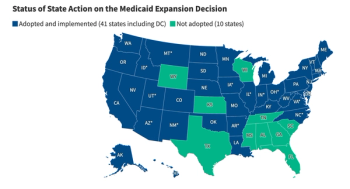
Integrated systems set for new delivery models
The design of the healthcare system left us with a loose confederation of silos, in which insurers try to lower medical loss ratios, physicians try to improve patient throughput.
The decision to invest in prevention and wellness seems like an easy one. So why is it so difficult to do?
These incremental improvements are easy to justify and execute, because they require no changes to the prevailing business models of healthcare.
Yet many integrated health systems have proved to be quite adept at making these critical tradeoffs. Having incorporated elements of both the financing and the delivery of care, these systems are able to achieve superior outcomes and lower costs, while innovations like prevention and wellness programs seemed to develop effortlessly. The difference is that once-separate functions, departments and companies are now managed as interdependent components that need to be optimized as part of a much more cohesive machine.
Being integrated is not the same as being large. Grand Valley Health Plan, a for-profit system in Grand Rapids, Mich., is one one-thousandth the size of Kaiser Permanente, yet has formulated an enviable primary care system that achieves stellar ratings for wellness and prevention by investing in added benefits like embedding mental health services into every primary care visit.
Integration is also not about squeezing costs. Contrary to the 1990's-era perception of managed care, many integrated health systems have made substantial investments in services focused on primary and preventive care. Group Health Cooperative in Seattle has implemented a medical home that relies on a high-engagement model that offers patients four to five times more touch points with the health system and their team of providers.
BEHAVE LIKE AN INTEGRATED SYSTEM
Meanwhile, having multiple healthcare system components under an organization's control does not automatically lead to superior performance. In some instances, organizations may have been capable of introducing innovations similar to the industry leaders had there been greater managerial integration, but were instead behaving like a portfolio of independent healthcare businesses,
Will Accountable Care Organizations usher in a wave of integrated health systems?
It is notable that integrated systems don't necessarily require any major policy or payment changes to spur their founding or growth; these organizations simply realized that managing their various roles as an integrated system was the best way to ensure quality, affordability, and sustainability.
Integrated systems can do things that others can't, simply because there's no need to force their business models to adapt to new demands for increased wellness and prevention. For them, delivering wellness and prevention is the business model.
Jason Hwang, MD, is the co-founder of and executive director of health care at Innosight Institute, a not-for-profit think tank devoted to applying the theories of disruptive innovation to problems in the social sector.
Newsletter
Get the latest industry news, event updates, and more from Managed healthcare Executive.





















































